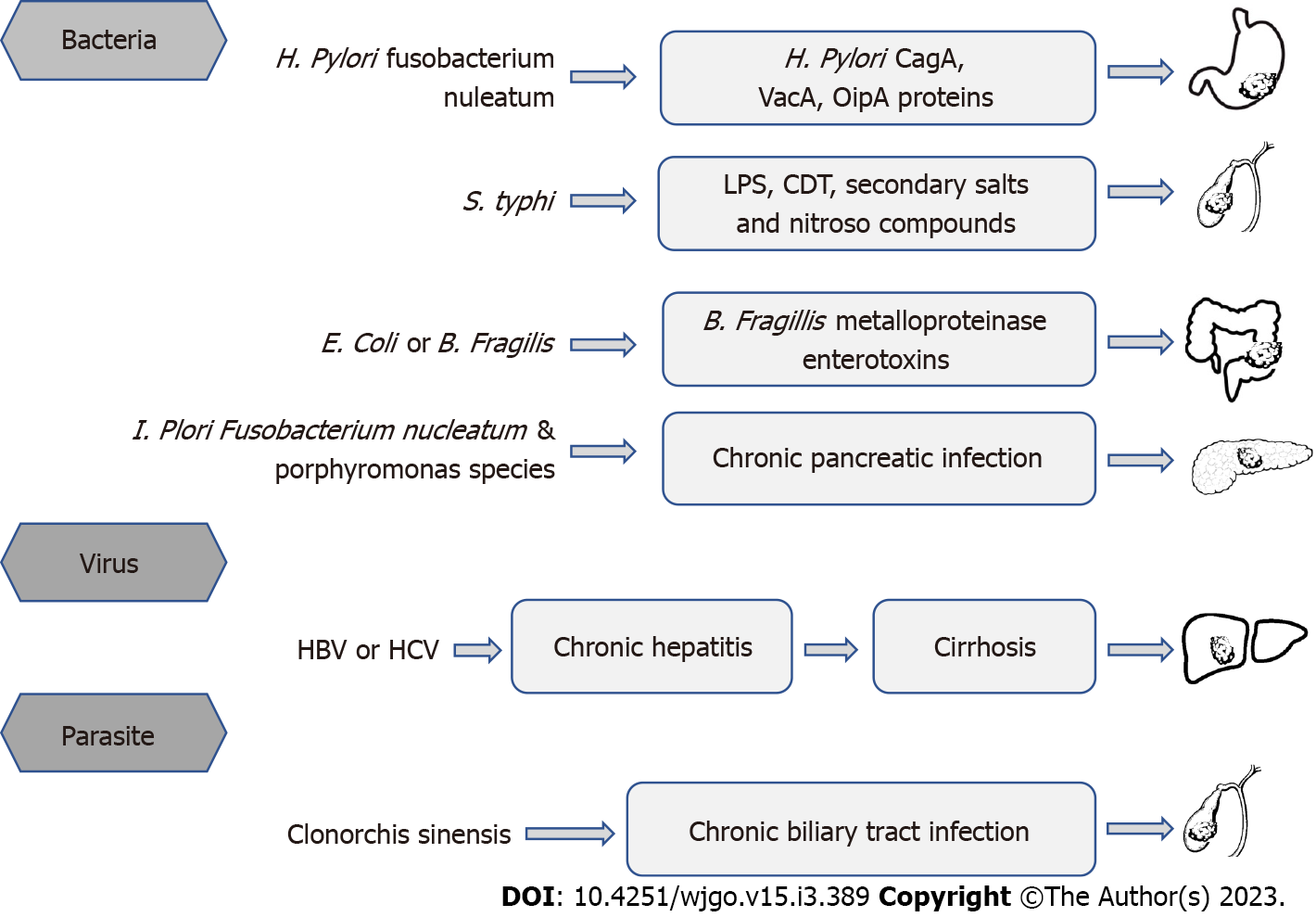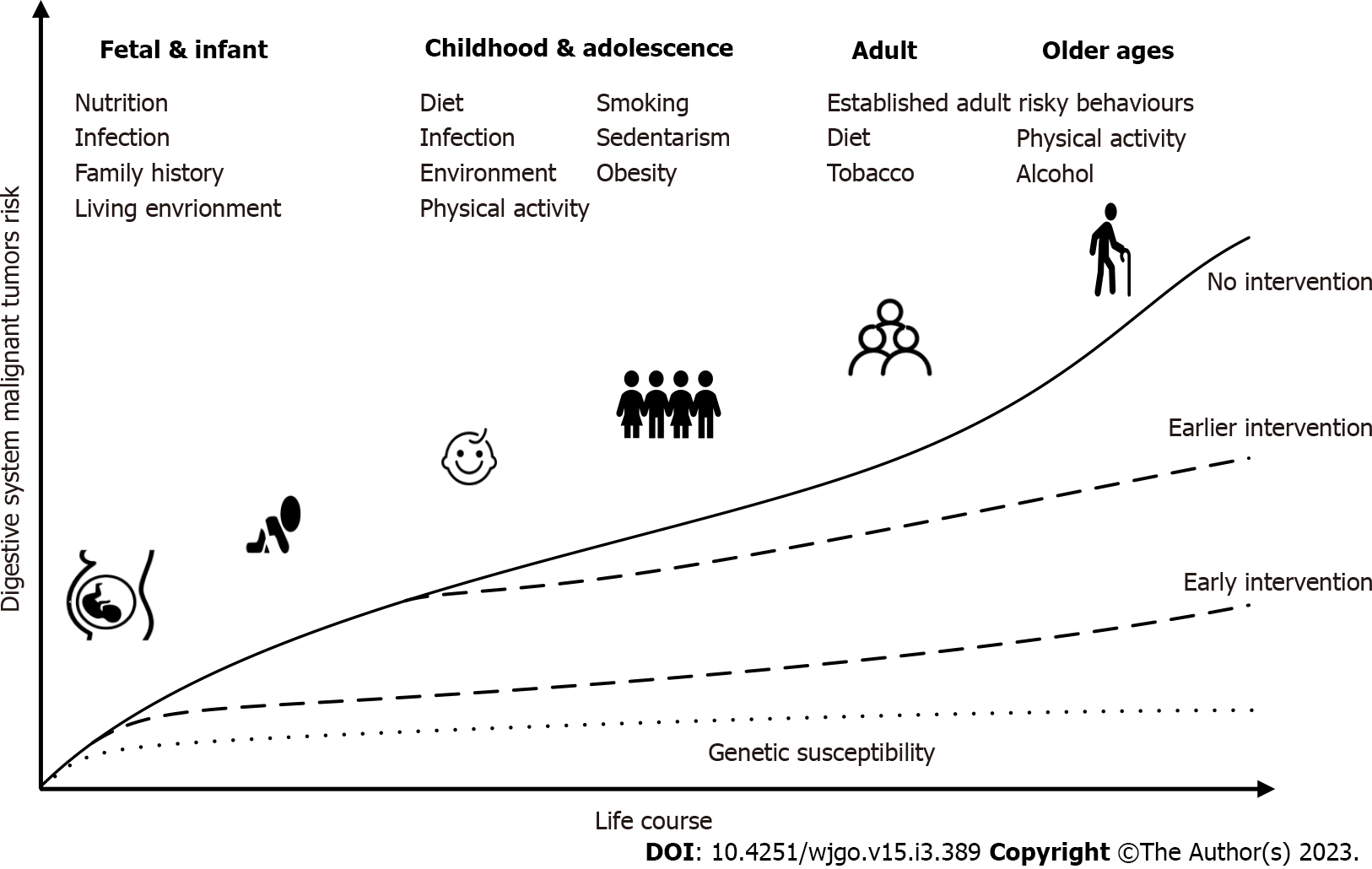Copyright
©The Author(s) 2023.
World J Gastrointest Oncol. Mar 15, 2023; 15(3): 389-404
Published online Mar 15, 2023. doi: 10.4251/wjgo.v15.i3.389
Published online Mar 15, 2023. doi: 10.4251/wjgo.v15.i3.389
Figure 1 Carcinogenic mechanism of malignant digestive system tumors based on chronic inflammation.
H. pylori: Helicobacter pylori; CagA: Cytotoxin-associated gene A; VacA: Vacuolating cytotoxin A; OipA: Outer inflammatory protein A; S. typhi: Salmonella Typhi; LPS: Lipopolysaccharide; CDT: Cytolethal distending toxin; E. coli: Escherichia coli; B. fragilis: Bacteroides fragilis; HBV: Hepatitis B virus; HCV: Hepatitis C virus.
Figure 2 Human life course and the risk of digestive system malignant tumors.
Risk factors at different stages of the life course from the fetal and birth stages affect the occurrence and development of cancer. The potential genetic susceptibility to cancer is changed by chronic inflammation, diet, nutrition and other carcinogens in the environment, which determines the cumulative risk of cancer. Cancer prevention should include actions at each stage of the life course, of which the early stage is the most important. The greatest potential for an effective fight against cancer is to reduce the cumulative risk throughout the life course.
- Citation: Zhang YH, Chen XL, Wang YR, Hou YW, Zhang YD, Wang KJ. Prevention of malignant digestive system tumors should focus on the control of chronic inflammation. World J Gastrointest Oncol 2023; 15(3): 389-404
- URL: https://www.wjgnet.com/1948-5204/full/v15/i3/389.htm
- DOI: https://dx.doi.org/10.4251/wjgo.v15.i3.389










